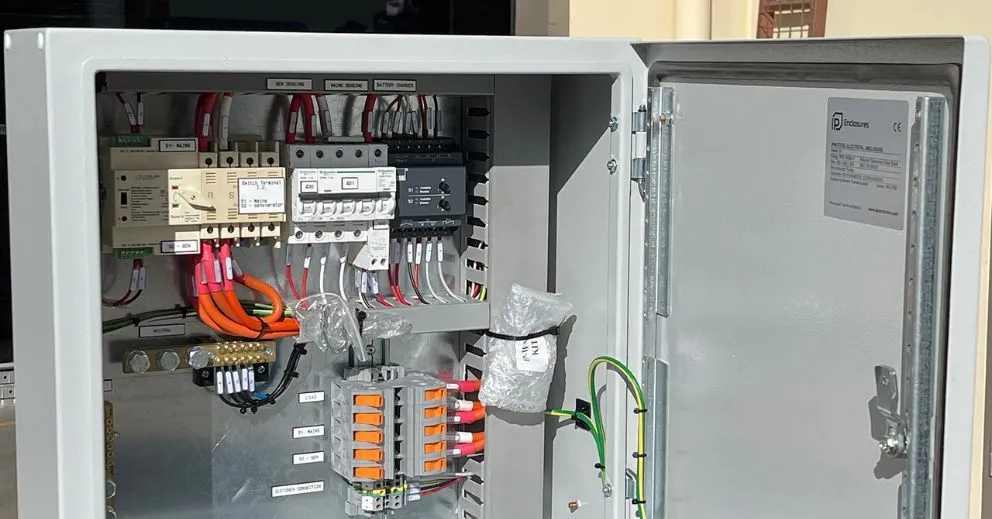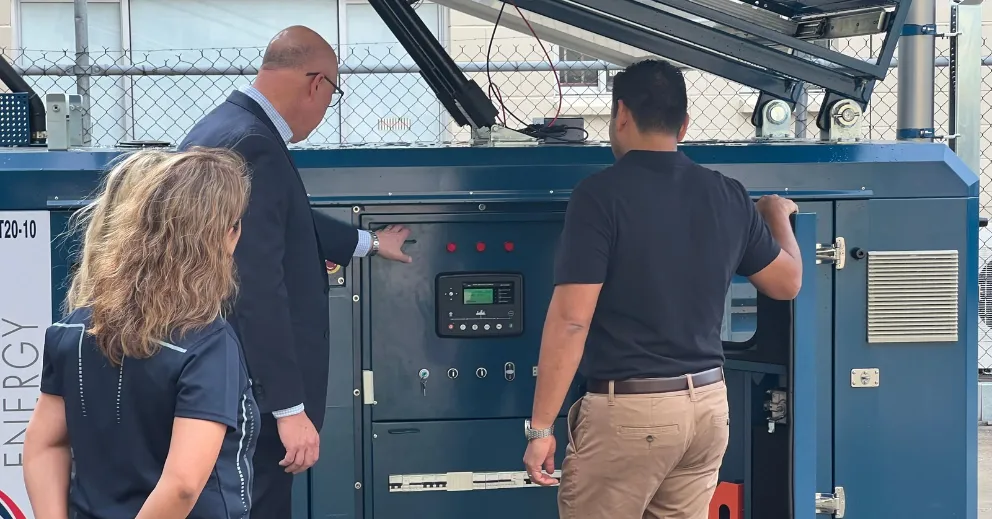When it comes to reliable backup power, it’s not just about having a good generator. It’s also about making sure that power kicks in quickly and safely when you need it most. That’s where an automatic transfer switch (ATS) comes in. This essential piece of equipment ensures a smooth transition between your main power supply and your backup generator without you having to lift a finger.
In this guide, we’ll explain exactly what an automatic transfer switch is, how it works, and why it’s a smart investment for homes and businesses alike.
What Is an Automatic Transfer Switch?
An automatic transfer switch is a device that automatically transfers the electrical load from your normal power source (like the electricity grid) to your backup generator when it detects a power outage. Once the mains power is restored, it automatically switches the load back to the grid.
In short, an ATS acts like a referee, directing where your electricity should come from — without requiring any manual intervention.
Why You Need an Automatic Transfer Switch
An ATS isn’t just about convenience—it’s also about safety and efficiency. Here's why it’s important:
- Uninterrupted Power Supply: Keeps essential appliances and systems running with minimal downtime.
- Safety: Prevents dangerous backfeeding, which could harm utility workers or damage your property’s electrical system.
- Automatic Operation: You don’t have to be on-site to manually start your generator when the power goes out.
- Peace of Mind: Especially valuable for businesses, medical facilities, or homes that can’t afford to lose power.
How an Automatic Transfer Switch Works
The operation of an ATS can be broken down into a few simple steps:
1. Monitoring the Power Supply
The ATS constantly monitors the voltage from the mains supply. It looks for signs of failure like a total blackout, low voltage, or unstable electricity.
2. Detecting a Power Outage
If the ATS detects a problem with the mains power (such as a complete outage or unacceptable voltage fluctuations), it signals the backup generator to start up.
3. Switching to Generator Power
Once the generator reaches the correct operating speed and is producing stable power, the ATS automatically switches the load from the mains to the generator. This ensures there’s as little disruption as possible.
4. Monitoring for Power Restoration
While the generator powers your property, the ATS continues to monitor the mains supply.
5. Returning to Mains Power
When it detects that the grid power has been fully restored and is stable, the ATS switches the load back to the mains supply and safely shuts down the generator.
All of this happens automatically, usually within seconds of a power failure—no manual effort required.
Types of Automatic Transfer Switches
Not all ATS setups are the same. Here are a few common types:
Open Transition (Break-Before-Make)
- Disconnects from the mains before connecting to the generator.
- There’s a slight delay, but it prevents any overlap between power sources.
- Commonly used in homes and light commercial settings.
Closed Transition (Make-Before-Break)
- Briefly connects both the mains and the generator together before switching fully.
- No loss of power, making it ideal for hospitals or critical facilities.
Service Entrance Rated
- Combines the ATS and the main circuit breaker in one device.
- Great for saving space and simplifying installation.
Choosing the right type depends on how critical uninterrupted power is to you.
Where Are Automatic Transfer Switches Used?
Automatic transfer switches are used in a wide variety of settings, including:
- Residential Homes: To keep essentials like fridges, lighting, and heating/cooling systems running.
- Businesses and Offices: To maintain operations and protect sensitive equipment.
- Hospitals and Aged Care Facilities: Where continuous power is critical for life-saving equipment.
- Industrial Sites: To ensure operations don’t come to a halt during power failures.
What Size ATS Do You Need?
The size of the ATS must match your generator’s output and your property’s electrical load.
- Small Homes: Often use a 100–200 amp ATS, depending on the number of circuits covered.
- Large Homes or Small Businesses: May require a 200–400 amp ATS.
- Industrial or Commercial Facilities: May need transfer switches rated at 600 amps or more.
If you’re unsure what size you need, it’s best to speak to an expert—choosing the wrong size could affect your generator’s performance or safety.
Benefits of Installing an Automatic Transfer Switch
- Faster Power Restoration: No fumbling with manual switches in the dark during an outage.
- Improved Safety: Reduces the risk of accidents and damage to electrical systems.
- Convenience: Works automatically without any manual effort, even if you're not at home or on-site.
- Increased Property Value: Homes and businesses with reliable backup power solutions are often seen as more valuable.
Common Mistakes to Avoid When Choosing an ATS
- Undersizing the ATS: Always choose a switch that matches or exceeds your generator’s rated capacity.
- DIY Installation: Transfer switches must be installed by a licensed electrician to comply with safety regulations.
- Ignoring Local Codes: Installation must meet Australian standards to ensure safe operation and avoid legal issues.
Choose the Right Automatic Transfer Switch with Jubilee Energy
An automatic transfer switch is a smart investment for anyone relying on backup power, whether at home or in business. It ensures that when the lights go out, your power keeps flowing safely and seamlessly.
Not sure which ATS is right for you? Jubilee Energy is here to help. Our team offers expert advice, high-quality products, and professional installation services tailored to your unique energy needs so get in touch today.
More insights from us
Discover the latest in power generation technology.





